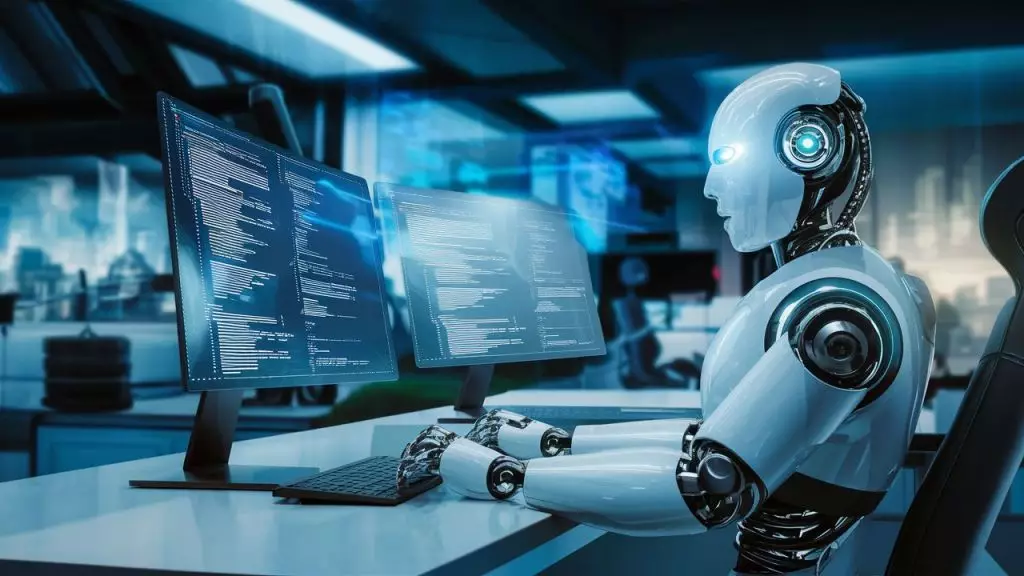The world of programming and artificial intelligence has recently witnessed a significant transformation with the advent of DeepCoder-14B, an innovative coding model introduced by Together AI and Agentica. This development goes beyond just releasing another product; it marks a pivotal shift in the way technology is democratized, paving the path for a new era of accessibility and collaborative innovation. The implications of DeepCoder-14B are profound, especially when viewed through the lens of center-right liberalism—an ideology that champions individual initiative while advocating for community-driven progress.
The Open-Source Paradigm Shift
The decision to open-source DeepCoder-14B is revolutionary, representing a courageous commitment to transparency and community involvement. In a tech landscape often dominated by proprietary systems, the choice to allow developers and researchers unfettered access to the underlying algorithms and training data is nothing short of audacious. By stepping away from a model that reduces artificial intelligence to a mere commodity, Together AI and Agentica are not only fostering innovation but also igniting a new spirit of collaboration that could charge the industry forward.
One cannot help but consider the societal implications of making such powerful tools widely available. The typical barriers—financial, technical, and educational—are dismantled, enabling individuals, startups, and smaller companies to leverage AI capabilities that were previously the realm of large tech giants. As center-right proponents argue, empowering individuals to innovate freely can lead to broader economic growth and technological advancements, fostering a landscape where meritocratic values can flourish.
An Unmatched Versatility
DeepCoder-14B’s prowess extends well beyond basic coding tasks. The model has astonishing capabilities in mathematical reasoning, scoring an impressive 73.8% on the AIME 2024 benchmark, which outstrips its predecessor’s performance by 4.1%. The correlation between coding and mathematical reasoning effectively demonstrates that the development of multifaceted AI tools is not just beneficial but essential, especially when they can address a variety of tasks with remarkable efficiency.
This versatility is particularly critical in an age where AI is called upon to perform multiple functions in an increasingly complex digital landscape. Adopting models capable of excelling across domains reduces redundancy and enhances productivity—a perspective in line with center-right liberalism that often seeks efficient solutions over regulatory complexities.
The Path to Efficient Training
Delivering a high-performing model at a lower computational cost is yet another milestone achieved by the DeepCoder-14B development team. With a compact architecture of merely 14 billion parameters, it has successfully avoided the pitfalls of massive parameter counts that often come with hidden costs and detrimental environmental impacts.
Furthermore, this model has been designed with innovative training techniques, such as overlong filtering and the new verl-pipeline system for managing sampling and updates. These advancements carve out a pathway for efficient and accelerated training cycles, thus presenting an attractive option not only for tech companies but for any organization agnostic of size or budget.
In a political climate often clamoring for sustainable and efficient solutions, this shift signals a long-awaited recognition that technological responsibility does not have to sacrifice capability. Emphasizing community-driven approaches, DeepCoder-14B manifests the kind of innovation that privileges functionality while addressing broader societal concerns—essentially a win-win for those who believe in responsible progress.
Fostering Competitive Innovation
By its very nature, DeepCoder-14B is set to disrupt existing norms in the coding community. Its launch could rejuvenate competitive spirit among developers, especially in places where access to cutting-edge tools had been previously restricted due to exorbitant licensing fees or resource constraints. This democratization of technology is not simply a boon; it acts as a catalyst for animating the long-stagnant waters of creativity within the tech industry.
As competition swells in response to this open-source offering, it inevitably inspires a commitment to improvement and diversity. The ethos of center-right liberalism weaves through this necessity for individual initiative while respecting the importance of collective achievements. The result? Enhanced code quality and innovation as developers brainstorm to harness the full potential of this tool.
Codifying the Future of AI Ethics
Finally, DeepCoder-14B invites critical reflection on the ethics surrounding AI development and usage. By enabling open-source accessibility, the research teams set a precedent for ethical practices that emphasize collaborative input rather than a monopoly on technological innovation. This shift underlines the value of community stewardship in creating AI solutions, stressing that the welfare of society must take precedence over unbridled corporate profit.
This new chapter encourages vigilant dialogue around responsible AI practices—a reflection of center-right principles where ethical considerations are balanced with market needs. It presents an opportunity for questioning proprietary dominance and foregrounding methodologies that yield societal benefits without sacrificing the urgency of progress.
DeepCoder-14B is not just another coding model; it is a harbinger of collective empowerment in technology, fortified by the guiding tenets of accessibility, ethical considerations, and community-led solutions.









Leave a Reply